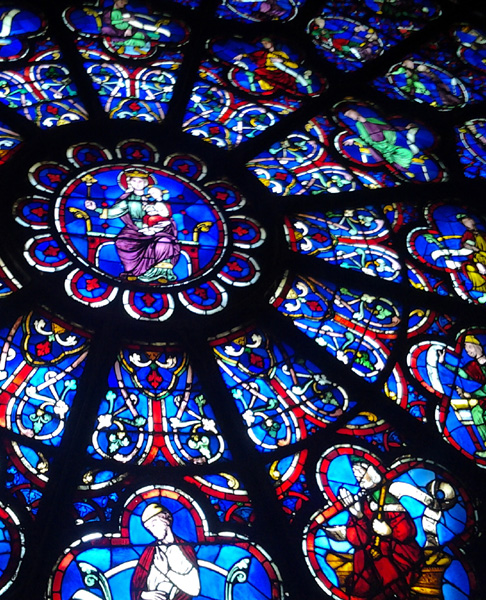Every great cathedral has its embarrassing secret, a shameful little
inadequacy that historians and tour guides prefer to downplay.
Notre-Dame de Paris has its own secret: for a good portion of the Middle
Ages it had a really lousy organ. Hard to believe, isn't it? Comparing apples to apples, the sister cathedral in Reims was a much
more mature Gothic building with superior acoustics. It was there that
the Medieval giant of ecclesiastic music, Guillaume de Machaut, served
as a canon, composed and performed his pieces. He simply would not be
able to fully manifest his genius in Paris.
To be fair, installing
an organ is always a huge gamble - artistic, financial and acoustic.
The architects can do their due diligence, make all the right
calculations in terms of the height of the ceiling and the width of the
windows, use the best materials, and the end result is still not
stellar. That was the case at Notre-Dame de Paris. The first instrument
was installed circa 1330, and it was a dud pretty much from the start.
Take two. By early 1400s a second instrument was installed on a high and
narrow stone gallery above the western portal while the old organ was
still being used. The new endeavor took us from bad to worse. Finally,
70 years later, in 1473 a major restoration began, including service of a
large number of pipes. The process would take fifty years! According to
some sources, the restorations were paid for by the Reims precinct.
Louis de Beaumont de Foret, who served as the Bishop at the time, was
reluctant to dish out a considerable amount of money on the instrument
that nobody seemed to be able to fix.
Naturally, one would wonder what kind of man would it take to operate such a temperamental instrument. An organist is much more than a musician. He (forgive me for defaulting to the masculine pronoun - we are talking
about Late Middle Ages here) must be a musical theorist, a sound
engineer, and above all, a diplomat. In addition to building a
relationship with every key, every pedal of the organ, he must build a
relationship with every stone of the building itself. That's the easy
part. Try building a relationship with the clergy, the choir and the
people who come to mass. All those diplomatic obligations do not leave much room for personal artistic ego.
During the Middle Ages, the job of the organist usually went to an older, calmer musician, whose job was to serve as the "glue" and not necessarily showcase his own talent. Notre-Dame de Paris did not really start hosting truly remarkable musicians until the early 1600s. The first notable world-class organist was Charles Racquet, who was appointed to the position in 1618. Until then, the position was not all that desirable or fulfilling from the artistic standpoint, as there were too many physical and political restrictions.
As a historical novelist who likes to write about some of the more obscure historical periods and figures, I became obsessed with the idea of writing about the ecclesiastic music tradition in Paris on the cusp of the Reformation. After the death of Guillaume de Machaut, there was a huge void in the world of church music. Pulling figures out of obscurity gives the author a lot more creative freedom. You can weave loose strings of biographies as well as urban lore to create an archetype. "Blood of the Stone Prince" is a tragicomic account of a fictitious child genius who rose to dangerous prominence in the 1470s.

No comments:
Post a Comment